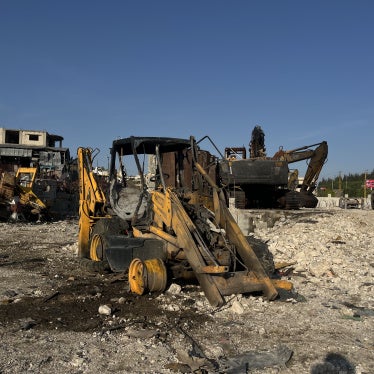Despite verbal acrobatics reminiscent of George Orwell's 1984, Sri Lankan officials have been unable to dismiss a shocking mobile phone video from last January purportedly showing Sri Lankan soldiers summarily executing naked and bound captives. The government has consistently claimed the video is fake, without providing any evidence that the gruesome scene was staged or the footage tampered with.
Now, the top United Nations envoy responsible for investigating extralegal executions around the world has added his voice to those believing the tape to be genuine. After commissioning three experts on forensic pathology, video analysis and firearms to review the tape, the envoy, Philip Alston, told the BBC, "You cannot fake the precise sort of reaction which the human body makes when shot at close range by such a weapon."
Of course Sri Lanka's public relations team went into its usual overdrive, denouncing the "bias" of the UN expert and suggesting that he was on a "personal crusade" to force a war crimes investigation over the allegations.
The response was unsurprising. The Sri Lankan authorities have a list of "biased" organisations that includes just about anybody who reported critically on the final months of the fighting last year against Liberation Tigers of Tamil Eelam, in which at least 7,000 civilians died. The villains include my own organisation, Human Rights Watch, other international human rights and humanitarian groups, several UN agencies, the European Union, the BBC, Channel 4 and many other media outlets. For our Sri Lankan human rights colleagues and journalists, the situation is even graver, of course: many have fled the country fearing for their lives, and some have paid the highest price.
But the Sri Lankan spin is starting to fray. General Sareth Fonseka, the man in charge of last year's offensive and who is challenging his former boss for the presidency, said that the orders to execute surrendering Tamil Tiger leaders in the final days of the war had come directly from the defence secretary, Gotabaya Rajapaksa, the powerful brother of President Mahinda Rajapaksa. The general later claimed to have mis-spoken, but it is difficult to imagine what he meant to say instead.
The atrocity captured in the video was not an aberration, but sadly an all-too-common occurrence during the 26-year civil war. Both government forces and the Tamil Tigers were responsible for summary executions and targeted killings for which no one has ever been punished. Hundreds of people, primarily ethnic Tamils, have "disappeared". During those dark days, local newspapers on a daily basis ran ads such as "White Van Disappearance - Information wanted," placed by desperate relatives of the latest victims. As hard as they try, Sri Lankan officials cannot hide the reality of what happened during this brutal conflict and its continuing impact on Sri Lankan society.
When you really dig into the "disappearances," as Human Rights Watch has done, the truth becomes all too apparent. For our March 2008 report, Recurring Nightmare: State Responsibility for "Disappearances" and Abductions in Sri Lanka, our investigators spoke to families and witnesses in more than a hundred such episodes. In most cases we were able to establish direct state responsibility. These were just a small fraction of the disappearances and executions carried out by state security services over the course of the armed conflict. But no one has ever been held responsible.
The government's record of investigating allegations of war crimes by both government forces and the Tamil Tigers during the final months of the conflict has been no better. Human Rights Watch and others reported the Sri Lankan army's repeated indiscriminate shelling of civilians, including packed hospitals, and the blocking of humanitarian assistance to the trapped and desperate population in the war zone. One reason the government locked nearly 300,000 civilians fleeing the fighting in closed camps apparently was to keep their stories from coming out.
The Sri Lankan government continues to believe that aggressive denial is the best policy. But the price it is paying in lost credibility is rising. The European Union is considering ending textile trade benefits to Sri Lanka over its human rights record, while the International Monetary Fund (IMF) took the extraordinary step of delaying an emergency loan for months. At the direction of the US Congress, the US State Department produced a report detailing alleged violations of international humanitarian law during the final months of the conflict.
When the UN secretary general Ban Ki-moon visited Sri Lanka shortly after the conflict ended in May, President Rajapaksa promised him that his government would investigate, but it has not kept that promise. The ball is now in Ban Ki-moon's court: he should establish an independent international investigation to establish the truth of what happened in Sri Lanka, an essential step toward accountability for the serious crimes committed there.
Peter Bouckaert is Emergencies director at Human Rights Watch.





